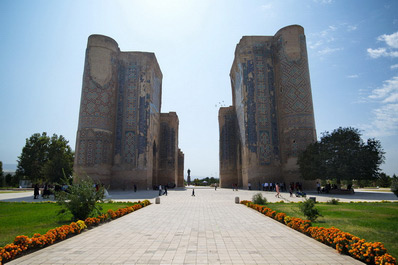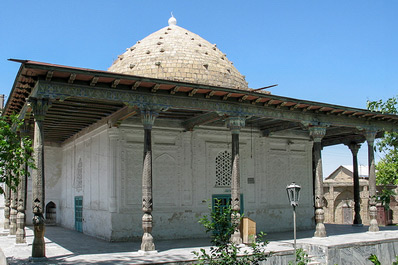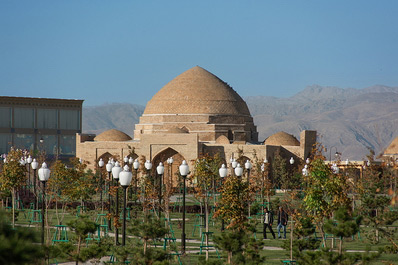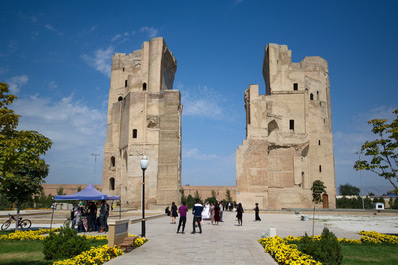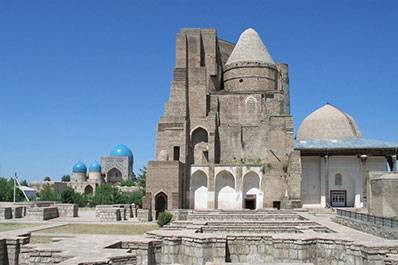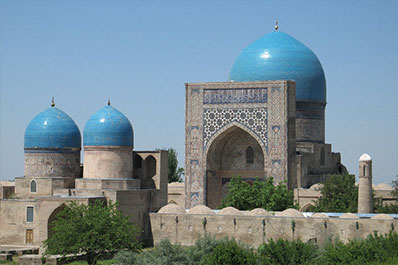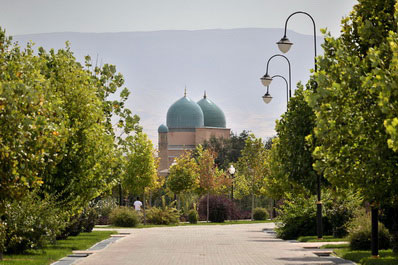Shakhrisabz Travel Guide
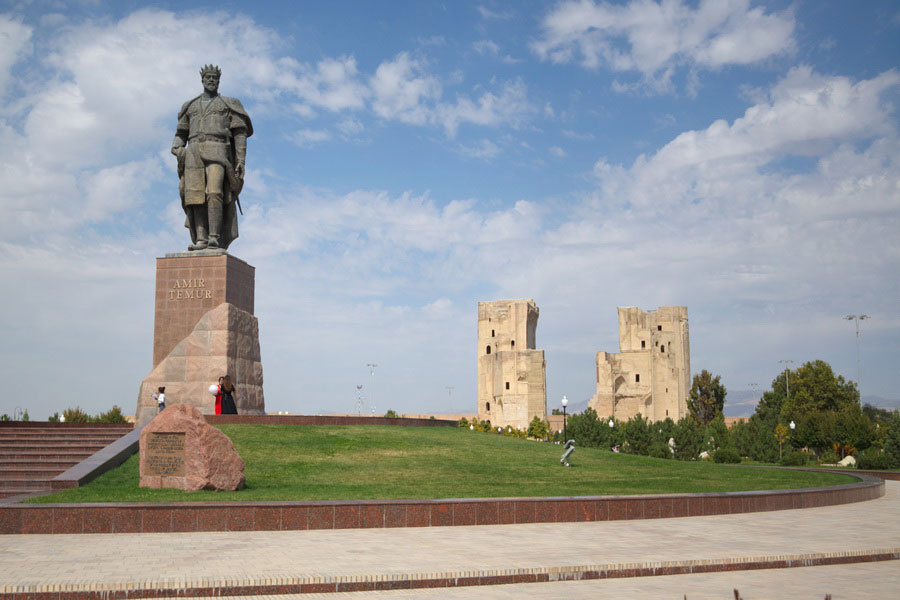
Former names: Kesh, Nautaka
Altitude: 632 m above sea level
Popular languages Uzbek
Time zone: UTC+5
Living nationalities: Uzbeks, Tajiks, Russians
International telephone code: +998 7552
Postal code: 1813XX
Vehicle code: 70-74
Shakhrisabz, a city steeped in history, is among Uzbekistan's oldest, celebrating its 2700th anniversary in 2002. This UNESCO World Heritage site is also renowned as the birthplace of Amir Timur, the founder of the Timurid dynasty, known historically as Tamerlane.
Tourists from around the globe are drawn to the surviving architectural monuments from the Timurid era.
How to Get to Shakhrisabz
The most convenient route to Shakhrisabz is a scenic 87 km drive from Samarkand. Flights to Samarkand are available from Tashkent, various Russian cities, including Moscow and St. Petersburg, and several world capitals. The high-speed Afrosiab train from Tashkent is another option. Alternatively, a less popular route is a 105 km drive from Karshi.
Is Shakhrisabz Safe?
Shakhrisabz is relatively safe with a noticeable law enforcement presence. However, leaving belongings and documents unattended is not advisable.
Brief History of Shakhrisabz
Historians believe Shakhrisabz, initially known as Kesh, was established in the 8th century BC. The name Kesh, derived from the Sogdian language, signifies "house," "dwelling," or "settlement." Initially, the residents of Kesh practiced Zoroastrianism, and over time, some converted to Nestorianism, a Christian sect.
By the 4th century BC, Alexander the Great's armies had conquered Kesh. Throughout the 1st and 2nd centuries, the Kushan Empire controlled the city, followed by the Kangyuts in the 3rd and 4th centuries. Subsequently, Kesh came under the dominion of the Chionites, Kidarites in the 6th century, and then the Eftalites. Until the 8th century, the city experienced influence from the Turkic and West Turkic Khaganates, and later from the Arabs and Karakhanids.
The 13th century saw the famed explorer Marco Polo traverse what is now modern-day Shahrisabz.
In the 14th century, the Timurid dynasty, under the leadership of Amir Timur, a native of Kesh, rose to power. Tamerlane transformed Kesh into a significant cultural and scientific hub of his empire, constructing the grand Ak-Saray Palace and his intended tomb.
The 15th century marked the transition of Kesh to Shakhrisabz, a name first documented in Babur's 16th-century memoirs, "Babur-name." Shakhrisabz translates to "green city" in Persian, combining "shahr" (city) and "sabz" (green).
From the 16th to the 20th centuries, Shakhrisabz was under the rule of the Bukhara Khanate and Emirate. During the Soviet era, it was a part of the Uzbek SSR, and in 1991, it became a component of independent Uzbekistan.
Shakhrisabz Sights & Attractions
The Ak-Saray Palace ruins stand as Shakhrisabz's most iconic landmark. This magnificent "white palace," as its name translates in Uzbek, was constructed over a span of 24 years, from 1380 to 1404, by order of Amir Timur. He envisioned it to overshadow the grandeur of Kuksaray and Bustan-saray in Samarkand. The palace, adorned with golden hues and exquisite facade decorations, featured a rooftop swimming pool. Today, only two segments of the massive entrance arch remain, yet their splendor continues to captivate visitors.
The Dor-us Saodat (Dorus Siadat) memorial complex originated from the untimely death of Jahongir, Amir Timur's favored son. His body was moved from Samarkand to Shakhrisabz, where a mausoleum was later built over his grave. Additionally, a tomb for Timur's second son, who passed away at 29, was constructed here, leading to the creation of the Omar-Sheikh mausoleum. Timur had intended for a mausoleum for himself behind Dor-us Saodat, but posthumously, he was buried in Samarkand's Gur-Emir tomb by his grandson. The 19th century saw the addition of the Hazrat Imam mosque to the complex.
The Dor-ut Tilovat (Dorut-Tilovat) ensemble, established in 1374 by Amir Timur, once encompassed a vast complex with a cemetery. Notable burials include Sheikh Shamsiddin Kulola, mentor to Timur's father, and distinguished figures like Bahauddin Naqshbandi. Timur's father, Amir Taragai, was also laid to rest here. The complex expanded to include the Dor-ut Tilovat madrassah, the Gumbazi-Seyidan mausoleum, and a mosque named Kok Gumbaz, or "blue dome," for its distinctive blue-tiled dome.
Near Shakhrisabz, three ancient hill forts - Uzunkir, Padayataktepa, and Sangirtepa - are remnants of the ancient city of Nautaka. Archaeological excavations have unearthed cultural layers dating back to the 9th century BC, including one of Central Asia's oldest Zoroastrian temples and an ancient citadel. These sites continue to be explored by specialists, offering insights into the region's rich past.
Food in Shakhrisabz
When visiting Shakhrisabz, a must-try is the tandyr gusht, a delectable dish of young lamb meat baked in a tandoor oven. Another local specialty is Langar flatbread, originating from a nearby village with the same name. These flatbreads, made from rye flour, are intriguingly more flavorful when cold than hot.
Shopping in Shakhrisabz
Shakhrisabz is renowned for its unique embroidery, featuring distinctive burgundy and black colors. Artisans use the "iroki" technique to adorn a variety of items, including tablecloths, skullcaps, chapans (traditional coats), shoes, bags, and even covers for laptops, tablets, and phones. Don't forget to check out the locally produced wines, which make for excellent souvenirs or gifts.
Best Time to Visit
For the best experience, plan your visit to Shakhrisabz during the tourist season, which spans from March to early June and then again from September to October. Summers in Shakhrisabz can be intensely hot, while winters are less crowded, offering a more peaceful atmosphere.


